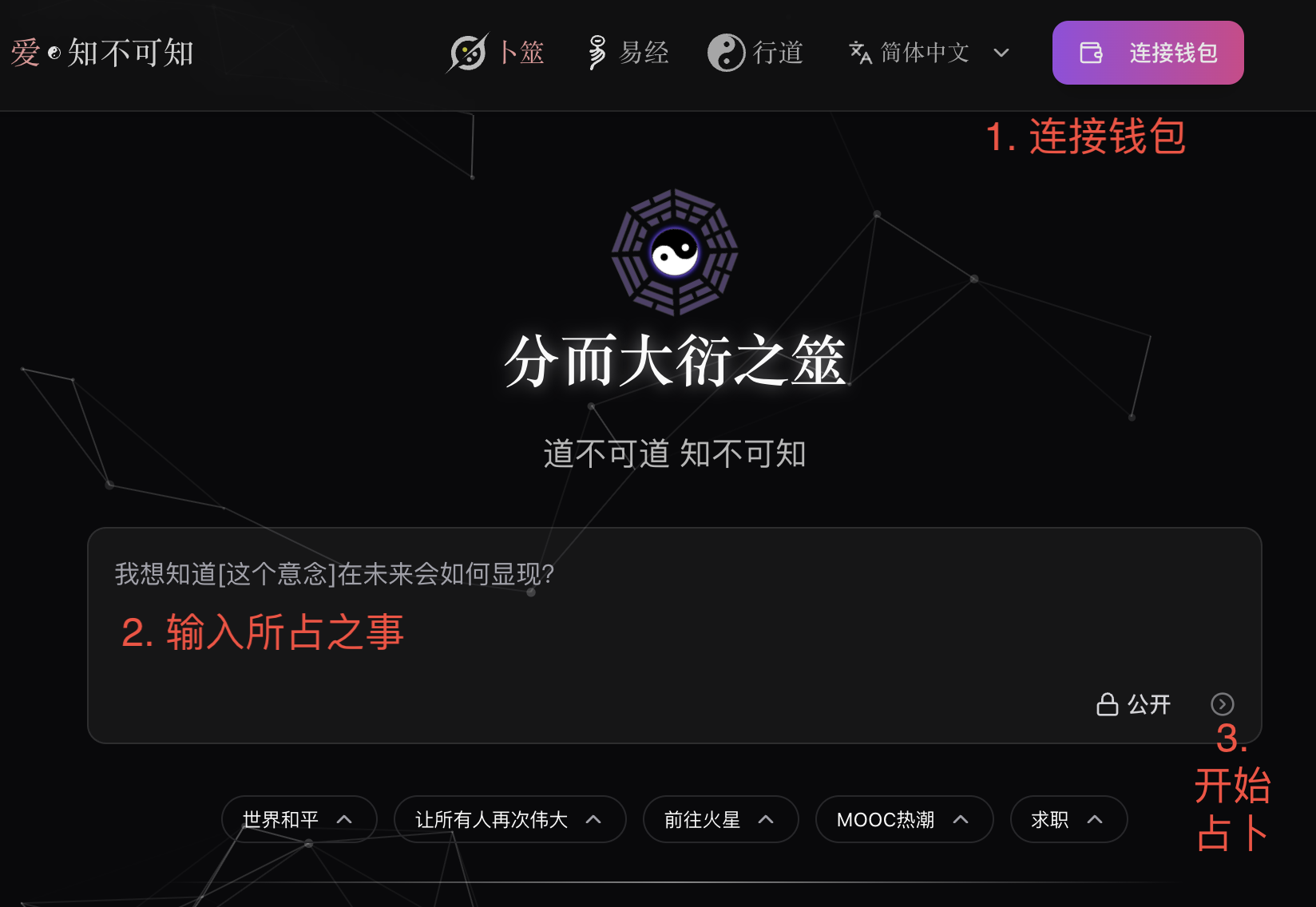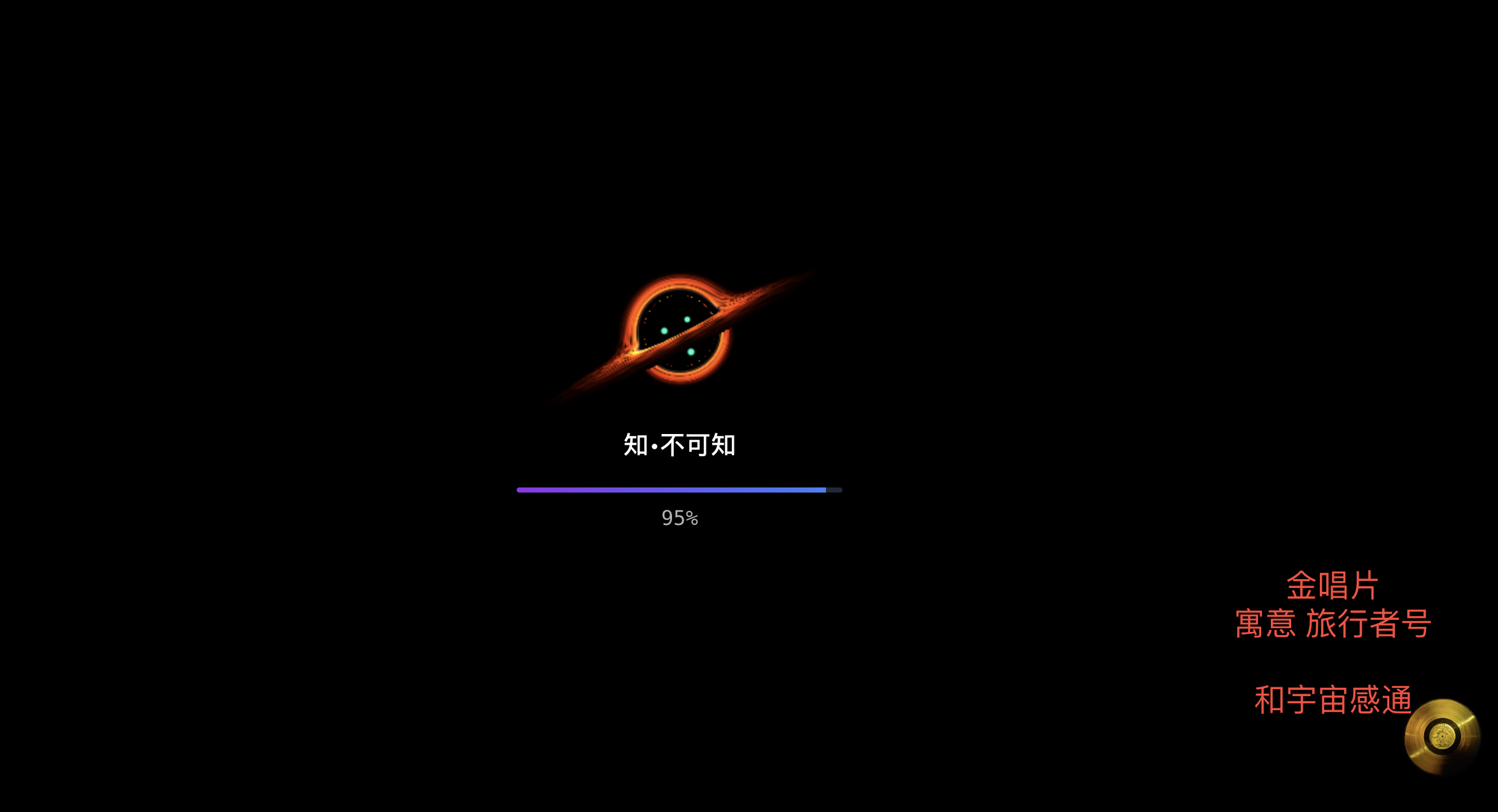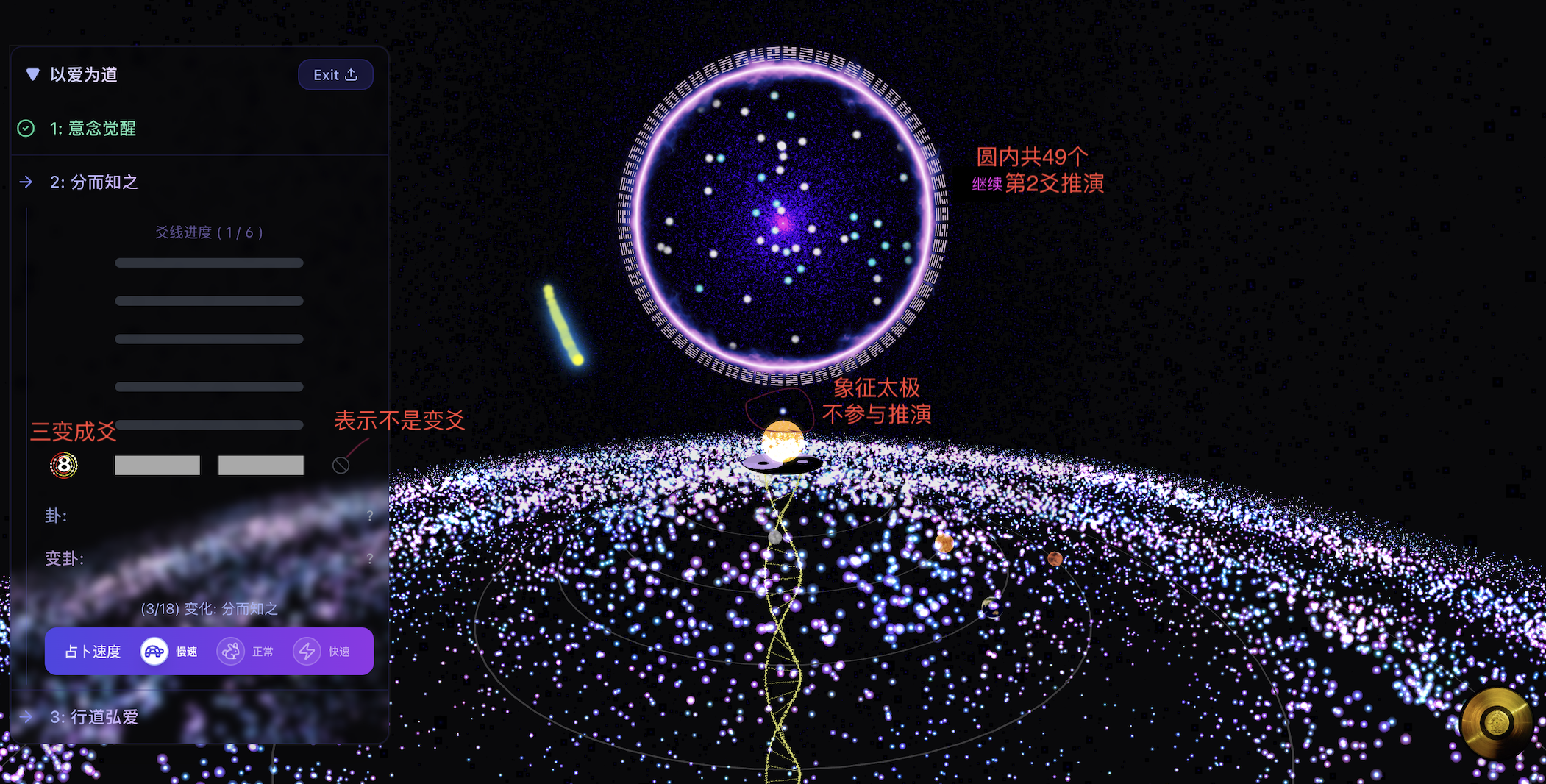The Da Yan Divination Method
One-Way Computation, Divination and Modern Cryptography
Commit-Reveal
Commit
Hash
Reveal
Da Yan Divination
The Unknowable
Hexagram
The Diviner
Zero Knowledge Proof
Prover
Proof
Verifier
I. Introduction: Why Recommend Only the Da Yan Divination Method?
Among the many divination methods for the I Ching, the Da Yan method is the only one explicitly recorded in the I Ching's "Xici Zhuan" (The Great Treatise). It is also the most ancient and orthodox method of divination. Compared to later methods invented for convenience, such as the coin method, the Da Yan method possesses an incomparably profound depth in its procedural rigor, spiritual engagement, and symbolic meaning.
-
Orthodox Heritage and Spiritual Depth: From the pre-Qin divination cases recorded in the Zuo Zhuan and Guoyu to later masters of I Ching studies like Guo Pu and Shao Kangjie, the Da Yan method was the one they revered and used. The reason this method was esteemed by masters throughout history is that it is far more than a predictive technique; it is a spiritual practice for connecting the individual with the Way of cosmic change and for profound self-reflection. The ritual itself is the first step in focusing the mind and paying respect to the unknown.
-
Resonance Between Rigorous Ritual and the Cognitive Process: Through the complex process of "eighteen transformations to form a hexagram," the Da Yan method converts the diviner's thoughts and a series of minute, random physical actions (dividing the yarrow stalks) into a hexagram. This process is highly analogous to the human thought pattern for understanding complex matters—that is, "to know by dividing." We arrive at a clear understanding by continuously breaking down, examining, and summarizing a chaotic whole. This process forces us to slow down and fully immerse ourselves in the question, allowing the answer to "emerge" rather than be "demanded."
-
Wisdom's Guidance in the Style of a "Zero-Knowledge Proof": To draw an analogy from the world of cryptography, the Da Yan method provides a unique guide to action. For the matter you inquire about, 'The Unknowable' provides a hexagram for the present moment. This can be seen as a metaphor for the best course of action and a "zero-knowledge proof" of its potential validity, telling us how to pursue good fortune and avoid misfortune. At the same time, it does not reveal any specific, deliberately hidden information about the future. The genius of this mechanism is that it compels us to think, deduce, and formulate plans and actions from multiple perspectives based on the hexagram, rather than passively accepting it as a simple "judgment of fate." It respects our initiative in thought and action.
Therefore, this guide recommends only the Da Yan method. Because it is not just a way to seek answers; the process itself is a form of spiritual cultivation, a practice of personally experiencing how "to know by dividing."
II. Overview of the Divination Method
The core of the Da Yan method is to transform fifty yarrow stalks into a six-line hexagram through a rigorous ritual that incorporates randomness. The process can be summarized as follows:
- Set Aside One Stalk: From the fifty yarrow stalks, one is taken out and not used throughout the process, symbolizing the "Taiji" (the Great Ultimate) before the separation of chaos.
- Three Transformations to Form One Line: Using the remaining forty-nine stalks, one determines the yin/yang and moving/static nature of a single line through the procedure of dividing into two, hanging one, counting by fours, and gathering the remainders. This is repeated three times (three transformations).
- Six Lines to Form a Hexagram: After each line is determined, all stalks are returned to a count of forty-nine (or fifty, depending on the specific ritual), and the above process is restarted. This is repeated a total of six times to obtain six lines from bottom to top, forming the complete "Present Hexagram."
- Determine the Changing Hexagram: Based on the moving or static nature of the lines (old or young), the "Resulting Hexagram" (Zhi Gua), formed by the changing lines (Old Yang, Old Yin), is determined.
- Interpret the Hexagram and Lines: Following specific rules based on the number of changing lines, the Hexagram and Line Statements are interpreted. It is recommended to combine traditional interpretation methods with modern analytical tools (like AI models) for a multi-dimensional, open-ended reading.
III. Detailed Explanation of the Divination Method
1. Basic Components: Lines and Hexagrams
-
Yao (Line): The most basic unit of a hexagram, of which there are two types:
- Yang Line (—): Represents masculine, strong, active will.
- Yin Line (--): Represents feminine, yielding, passive will.
-
Gua (Hexagram): Composed of lines.
- Jing Gua (Trigram): Also known as the Eight Trigrams, composed of three lines. There are eight in total (Qian, Kun, Zhen, Xun, Kan, Li, Gen, Dui).
- Bie Gua (Hexagram): Also known as the Sixty-four Hexagrams, composed of six lines. This is the primary subject of divination analysis.
-
Yao Wei (Line Position): The six lines are numbered from bottom to top as first, second, third, fourth, fifth, and top. A Yang line is called "Nine," and a Yin line is called "Six." For example, if the first line is Yang, it is "First Nine"; if the second line is Yin, it is "Second Six."
2. To Know by Dividing: Obtaining the Hexagram
This is the most ancient method for obtaining a hexagram and the only one I personally recommend. Its core is eighteen instances of "dividing to know" (i.e., each line requires "three transformations," for a total of eighteen transformations for six lines). This process symbolizes the many choices we face in the future, where every decision affects the final outcome. In ancient times, fifty yarrow stalks were used; today, digital tools, such as fifty particles, can be used.
3. Practical Application with knowunknowable.love
This article uses the Web3 application www.knowunknowable.love as an example.
knowunknowable.love is a decentralized application (DApp) I developed that combines the ancient Da Yan method with modern Web3 technology. While promoting the "Global Goodwill Income Initiative" which advocates "taking love as the Way," it offers a new kind of online divination experience. In this application, you only need to focus on the process of "dividing"; the subsequent counting and hexagram construction are all automated.
Obtaining a hexagram is completely free. The application also provides an AI-powered interpretation feature. To access this AI interpretation, users can pay an arbitrary amount of USDC (any amount greater than 0) to the "Dukang Action DAO Contract," which also records the divination result on the L2 SCROLL chain. This is an optional feature suitable for users who have ETH in their wallets to cover Gas fees and also possess USDC.
For users new to Web3, you can use a newly created wallet (e.g., by creating a new account in Metamask). After obtaining the hexagram, you can choose not to pay and simply copy the resulting hexagram (e.g., "Qian as Heaven" or "Earth Fire Ming Yi") to another AI model (like Gemini or Deepseek) for interpretation.
Video Demonstration
Illustrated Guide
1. Connect Wallet and Ask a Question

- Connect Wallet: This is the first step to interacting with a Web3 application. You will need a browser wallet extension like Metamask. An empty wallet is sufficient, as the divination itself does not require any cryptocurrency.
- Sign and Ask: After connecting, the application will request a signature to log in. You can then write down the matter you wish to divine.

2. The Core Operation: The Digital Ritual of Eighteen "Divisions"
After asking your question, you will typically need to sign again to ensure the integrity and immutability of your query. Then comes the core part of the divination: you need to use your mouse to continuously divide the particles on the screen eighteen times.
These eighteen divisions are not random clicks; they drive a classical algorithm that has been passed down for thousands of years. Every three divisions constitute "one line from three transformations," generating one line of the hexagram. Here are the background operations driven by each of your divisions:
- Step 1 (a) Divide into Two: You draw a line with your mouse to arbitrarily divide the fifty particles on the screen (representing fifty yarrow stalks, with one symbolizing Taiji and not used) into left and right piles. This action of yours is the key source of randomness in the entire divination method.
- Step 2 (b) Hang One to Symbolize Three: The program will immediately and automatically take one "stalk" (particle) from the right pile. This is "hanging one," symbolizing Heaven, Earth, and Humanity.
- Step 3 (c) Count by Fours: The program will simultaneously count the left and right piles by fours and determine the remainder for each.
- Step 4 (d) Gather the Remainders: The program combines the remainders from both piles with the "hung one" particle and sets them aside.
- Step 5 (e) Recombine for the Next Transformation: Finally, the program combines the remaining particles from both piles (all of which are multiples of 4) to await your next "divide into two" action.

When you repeat this process three times, "one line" is generated. The program determines the nature of this line based on the total number of particles remaining after the three transformations. This total will only be one of the following four possibilities:
- 36 particles remaining → divided by 4 equals 9, which is Old Yang (⚌): Recorded as "Nine," it is a changing line that will transform into a Yin line.
- 32 particles remaining → divided by 4 equals 8, which is Young Yin (⚍): Recorded as "Eight," it is a static line that remains unchanged.
- 28 particles remaining → divided by 4 equals 7, which is Young Yang (⚎): Recorded as "Seven," it is a static line that remains unchanged.
- 24 particles remaining → divided by 4 equals 6, which is Old Yin (⚏): Recorded as "Six," it is a changing line that will transform into a Yang line.
The eighteen divisions you need to perform drive this "three transformations create one line" process six times, thereby constructing the complete six-line hexagram from the bottom up.

3. Obtain and Interpret the Result
After completing the eighteen divisions, the application will immediately calculate and display the final hexagram.

IV. Core Rules for Interpreting the Hexagram
After obtaining the Present Hexagram, interpret it in conjunction with the changing lines. While considering traditional interpretations, AI-assisted reading is also recommended, but the most important thing is your own personal insight.
-
Biàn Guà (Changing Hexagram): The "Old Yang" and "Old Yin" lines in the Present Hexagram are moving lines. They will change into their opposites, thus forming a new hexagram called the Zhī Guà (Resulting Hexagram). The basic principle is "the old changes, the young does not."
-
Rules for Interpretation (Common rules from Zhu Xi's Zhouyi Benyi):
- No changing lines: Read the Hexagram Statement of the Present Hexagram.
- One changing line: Read only the Line Statement of that single changing line in the Present Hexagram.
- Two changing lines: Read the Line Statements of both changing lines in the Present Hexagram, with the upper one as the primary reading.
- Three changing lines: Read the Hexagram Statements of both the Present and Resulting Hexagrams, with the Present Hexagram as primary and the Resulting Hexagram as supplementary.
- Four changing lines: Read the Line Statements of the two non-changing (static) lines in the Resulting Hexagram, with the lower one as the primary reading.
- Five changing lines: Read the Line Statement of the single non-changing (static) line in the Resulting Hexagram.
- All six lines change:
- If it is the Qian hexagram changing into the Kun hexagram, read the statement for "Use of Nines."
- If it is the Kun hexagram changing into the Qian hexagram, read the statement for "Use of Sixes."
- For any other hexagram, read the Hexagram Statement of the Resulting Hexagram.
V. Auxiliary Dimensions for Hexagram Analysis
In addition to the basic interpretation of Line Statements, you can enrich your understanding by considering the following "images" or symbols:
- Image of the Eight Trigrams: Each trigram symbolizes elements of nature (heaven, earth, thunder, wind, etc.) and human relationships (father, mother, eldest son, eldest daughter, etc.).
- Image of the Line Positions: The six lines, from bottom to top, symbolize the different stages of a matter's development from beginning to end. The first and second lines represent the earthly realm, the third and fourth the human realm, and the fifth and top the heavenly realm.
- Correct Position (Dāng Wèi) and Central & Correct (Zhōng Zhèng):
- Correct Position: A Yang line in an odd-numbered position (1, 3, 5) or a Yin line in an even-numbered position (2, 4, 6) is considered an auspicious sign.
- Central and Correct: The second and fifth lines are the centers of the lower and upper trigrams, respectively, making them the most favorable positions. If a line is both in a correct and central position (like the fifth line being Yang or the second line being Yin), it is considered most ideal.
- Image of Mutual Trigrams (Hù Tǐ): The lines 2, 3, 4 and 3, 4, 5 of a hexagram can form two new trigrams (mutual trigrams), providing additional information for analysis.